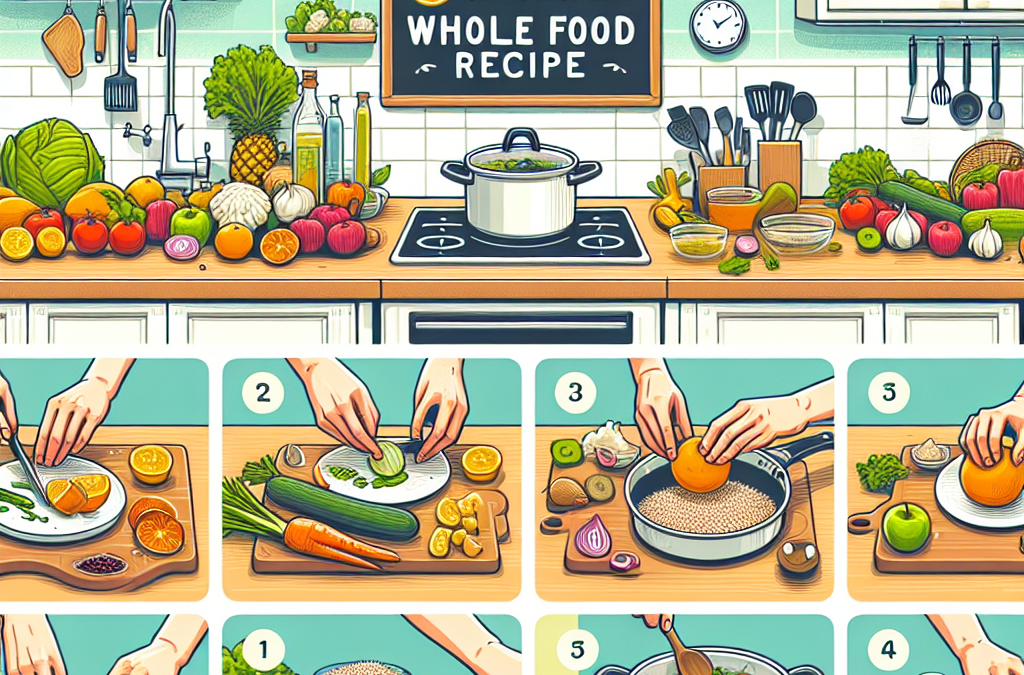Choosing the Right Ingredients
Understanding Organic Labels
When I first started my journey into organic cooking, it was a bit overwhelming all the different labels and certifications out there. The key is to look for USDA organic labels, which indicate that the food is made without synthetic fertilizers or pesticides. This is pure, wholesome goodness without the nasty stuff!
Don’t get too caught up in fancy packaging, though. Sometimes, you’ll find excellent organic options at your local farmers’ market, often at a better price than the grocery store. Plus, buying local can help you form connections with your community, which is always a bonus.
Lastly, remember to check for seasonal produce. Not only does it taste better because it’s fresher, but it’s also often cheaper and better for the environment. Eating with the seasons is like nature’s way of reminding us what’s good for our bodies at any given time.
Learning About Whole Foods
Whole foods are basically foods that are as close to their natural state as possible. This means no added sugars, no preservatives, and no unnecessary processing. Getting in the habit of choosing whole foods over processed ones can really elevate your cooking game.
Fruits, vegetables, whole grains, nuts, and seeds are the stars of the whole food show! I can’t stress enough how versatile these ingredients can be. For instance, you can use oats not just for breakfast but also in baking, or blending them into smoothies.
Experimenting with different whole foods can be a fun way to discover new flavors and textures. I love trying to incorporate new ingredients like quinoa or spelt into my meals. Each new food I try seems to open up a whole new world of recipes!
Making a Shopping List
Now that you’re tuned in on what to buy, let’s talk about how to get your shopping done efficiently. I always create a shopping list before hitting the market. This helps me stay focused and less likely to grab things I don’t need—like those tempting snacks at the checkout aisle!
An ideal shopping list focuses on the core ingredients you plan to cook with during the week. I try to include a variety of vegetables, some fruits, and a couple of whole grains. Keeping it simple but diverse makes meal prep much easier.
Lastly, don’t forget to take advantage of bulk bins! They can be a treasure trove of whole foods at a lower cost. Plus, you can buy just what you need. It’s environmentally friendly, and you always know you’re getting fresh ingredients!
Meal Planning for the Week
Setting Up a Weekly Menu
Now comes the fun part: planning your meals! I dedicate a little time each week to jot down what I want to eat. It keeps me organized and helps me resist those late-night takeout cravings. Plus, it’s exciting to see what I can create with what’s on hand!
I like to categorize my meals into breakfast, lunch, and dinner. Each meal can incorporate the ingredients I bought, reducing waste and saving money. For example, if I buy spinach, I’ll plan to use it in an omelet, a salad, and even a pasta dish throughout the week.
Don’t forget to leave room for some spontaneity! While having a plan is important, it’s also cool to feel inspired mid-week and swap out meals based on what you’re feeling or what looks better at the market that day.
Prepping Ingredients in Advance
Once my menu is set, I prep ingredients ahead of time. This means chopping veggies, cooking grains, or marinating proteins. Having things ready to go makes getting dinner on the table super quick! Some people take a whole Sunday to prep, but I find it works better to do little bits throughout the week.
If I know I have a busy day ahead, I’ll focus on prepping a batch of quinoa or lentils that I can sprinkle on salads or mix into dishes. This keeps things fresh and avoids that dreaded “what am I having for dinner?” panic.
Also, I’ve learned that if you can make some sauces or dressings in advance, it can elevate your meals in a snap. A quick homemade vinaigrette or sauce can really brighten up even the simplest of meals!
Utilizing Leftovers Creatively
Leftovers don’t have to equal boring meals! In fact, they can be a gateway to creating exciting new dishes. One of my favorite hacks is to transform yesterday’s roasted veggies into a hearty soup by just adding some stock and seasoning. Instant comfort food!
Get an Amazing Discount on Best Organic SuperFood Product!
Another idea is to turn leftover grains into a cold salad the next day—just add some chopped veggies, a bit of dressing, and you’ve got a completely different meal ready to enjoy at lunch. It’s such a timesaver!
And let’s not forget about blending leftovers into smoothies! I often throw in leftover fruit or greens, and I can’t tell you how satisfying it is to blend up something quick and delicious while reducing food waste.
Cooking Techniques to Master
Simple Cooking Methods
When it comes to cooking, simplicity often reigns supreme! I keep my methods straightforward—think roasting, steaming, and sautéing. These techniques let the natural flavors of the ingredients shine, and they don’t require a lot of time or complex skills.
Roasting is one of my go-to methods because it brings out sweetness in vegetables, and the easy clean-up is a total win. Just toss the veggies in some olive oil, salt, and pepper, and let the oven work its magic.
Steaming is another easy way to retain nutrients while cooking. Toss veggies in a steamer or a microwave-safe bowl, and you’re good to go! It’s particularly good for greens like broccoli and spinach, helping them maintain their bright color and fresh taste.
Experimenting with Spices and Herbs
Spices and herbs are your best friends in whole food cooking! They can completely transform a dish and add a host of health benefits. I love to keep a good selection on hand—think basil, cumin, turmeric, and fresh cilantro.
One of my favorite tricks is to experiment with spice blends. A pinch of curry powder or chili flakes can add an unexpected kick to a simple dish. Don’t be afraid to play around and add flavors that excite your palate!
Consult some recipes for guidance, but also feel free to throw caution to the wind. Cooking should be a joyful experience, not a chore, so trust your taste buds and have fun with it!
Embracing Cooking as a Mindful Practice
Lastly, cooking can be an amazing way to practice mindfulness. I like to dim the lights, put on some calming music, and really engage with what I’m doing. Whether chopping vegetables or stirring a pot, being present in the moment makes the cooking process so much more enjoyable.
Taking time to appreciate the colors, smells, and textures of your ingredients can transform your approach to cooking. I often find that getting lost in the task becomes a form of self-care, providing me with a sense of calm at the end of a busy day.
So, my advice? Don’t rush it! Enjoy the process, and remember that the meals you create are not just for nourishment—they can be a joyful expression of creativity and love.
FAQs
1. What are some easy organic whole food recipes to start with?
Some easy recipes include roasted veggies, quinoa salads, and simple veggie stir-fries. They all highlight whole ingredients and are super flexible based on what you have on hand!
2. How do I know if a product is truly organic?
Look for the USDA organic seal on the packaging, which certifies that the product meets strict organic standards. Additionally, ask local producers about their farming practices.
3. Can I use frozen vegetables in organic recipes?
Absolutely! Frozen veggies can be a convenient option and often retain more nutrients than some fresh options. Just check that they don’t have added sauces or preservatives.
4. What should I do with leftover meals?
Get creative! You can repurpose them into soups, salads, or grain bowls. Leftover grains can also be thrown into smoothies, which adds a nutritious twist.
5. How do I make the cooking process less stressful?
Planning ahead is key! Prep your ingredients in bulk and try to keep your cooking methods simple. Embracing cooking as a mindful practice can also make it a more pleasant experience.




